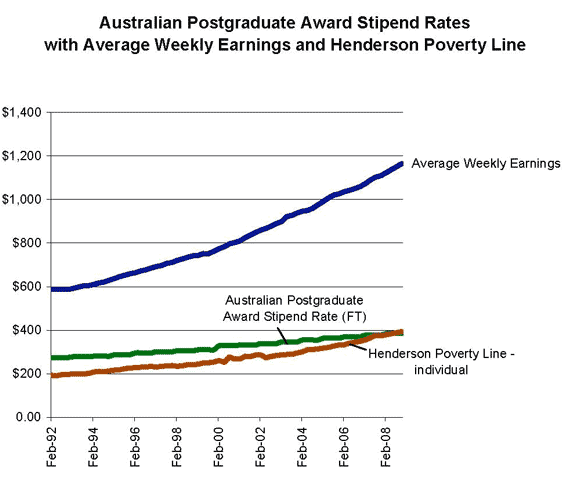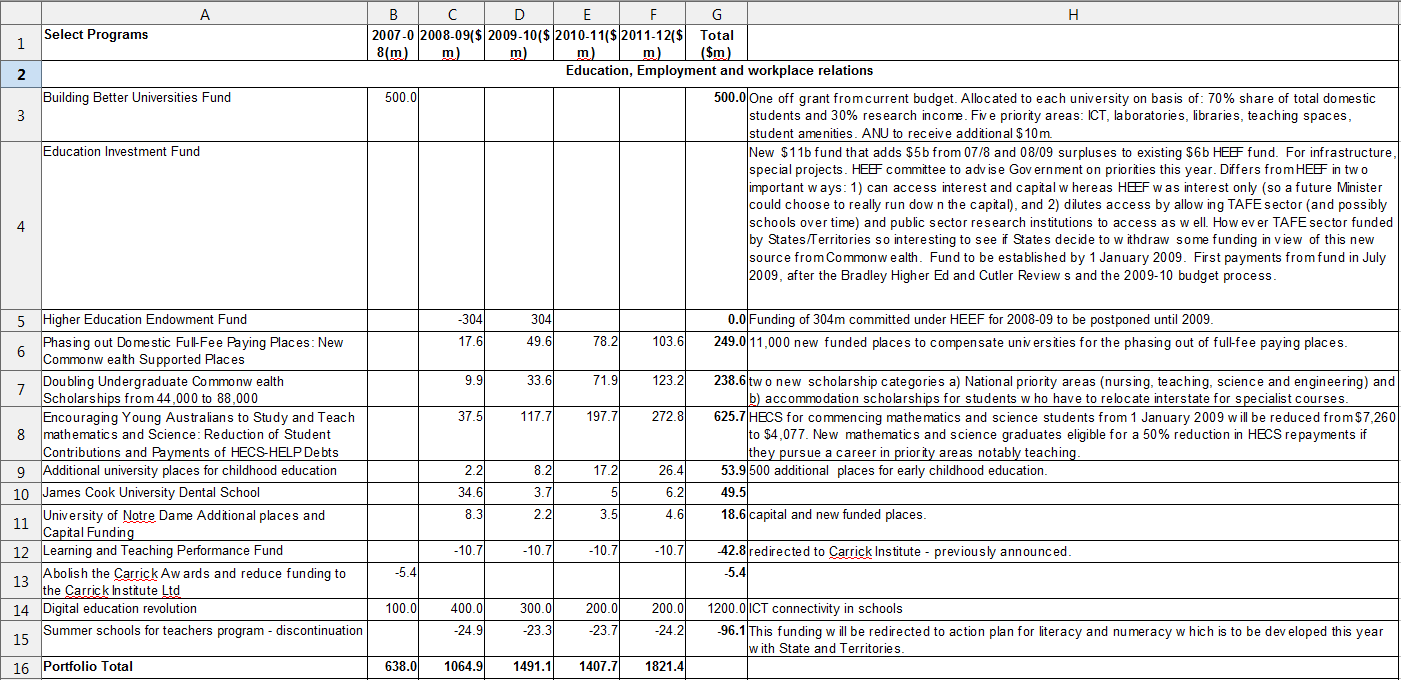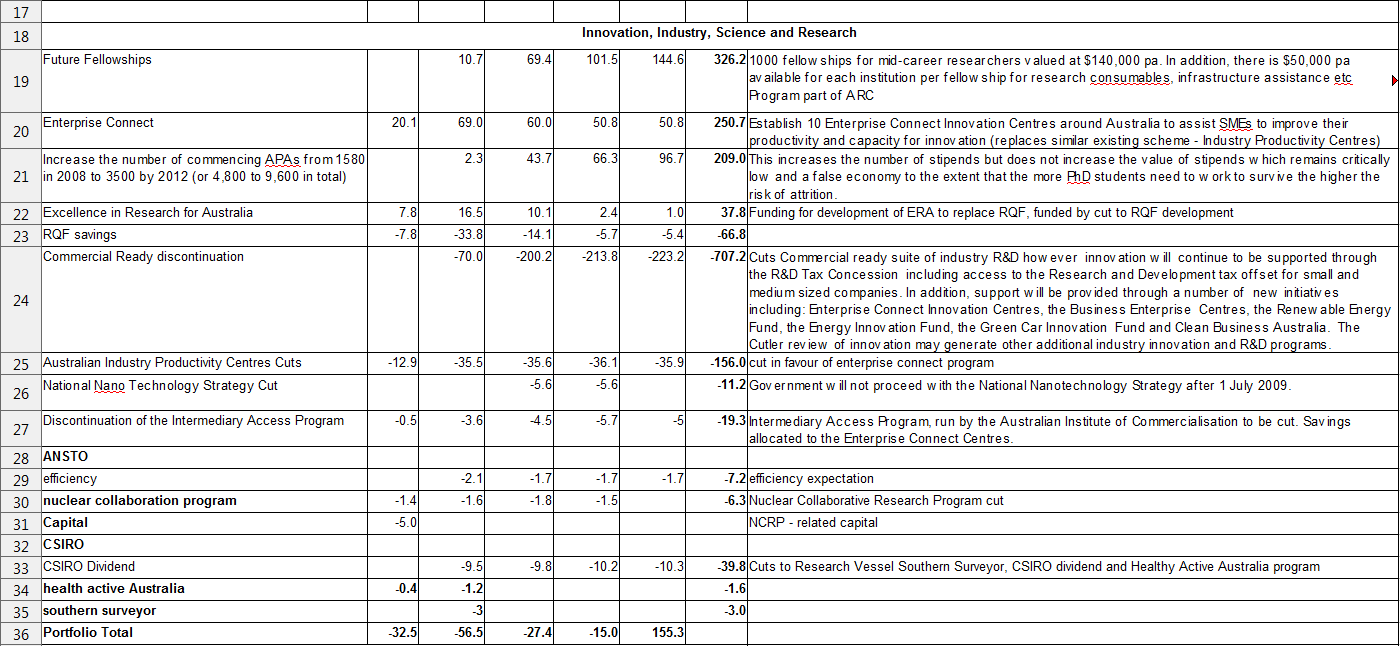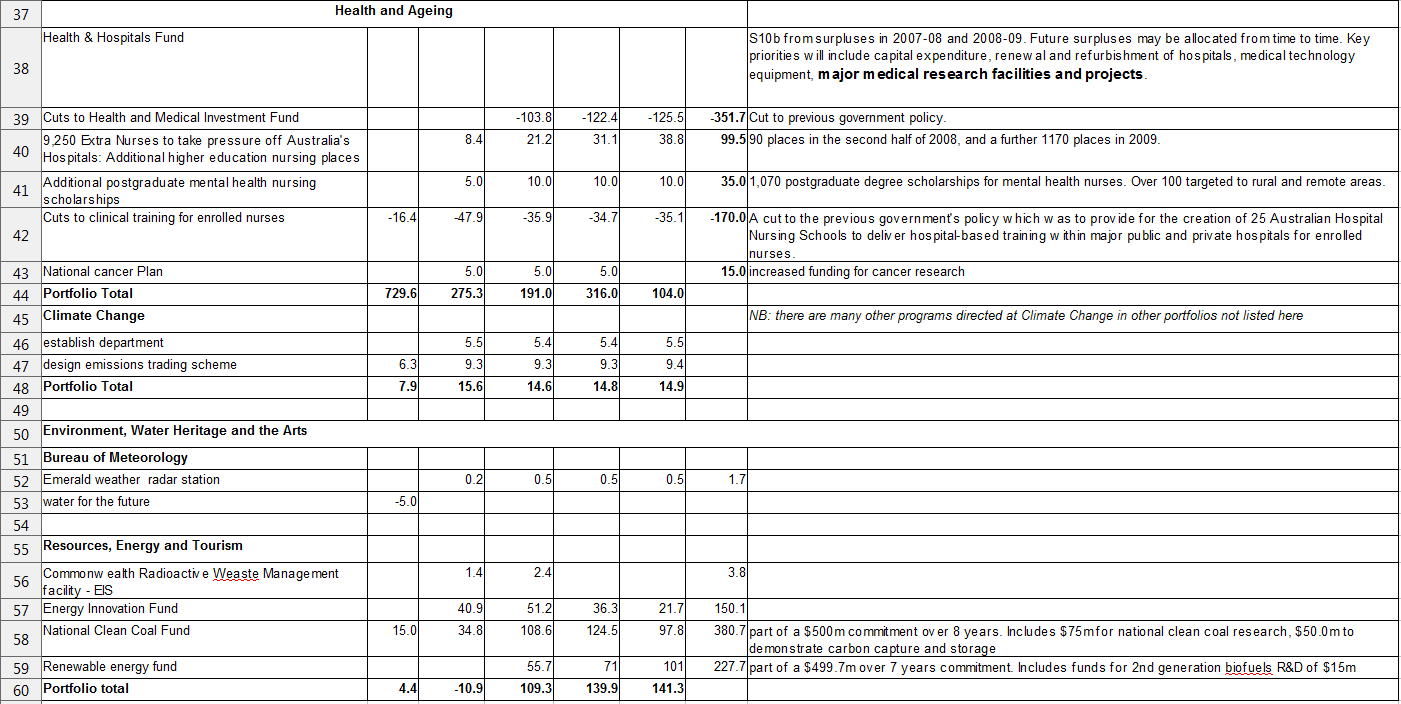|
|
|
|
|
|
|
News & Views item - May 2008 |
![]() The Federal Budget 2008-09 as Regards Higher Education and Research.
(May 14, 2008)
The Federal Budget 2008-09 as Regards Higher Education and Research.
(May 14, 2008)
Tonight I announce three new funds that will provide more than $40 billion for capital investment in infrastructure, education and health to strengthen the economy. In infrastructure — in roads, rail, ports and broadband. In education. In skills, TAFE colleges and universities. In health and hospitals. And to build national productivity... We will make initial contributions to these funds from the 2007-08 and 2008-09 Budget surpluses, and will add to them from future surpluses as appropriate. Both the capital and earnings of these funds will be available for investment once projects have been identified and rigorously evaluated, from next year onwards.
The words of Federal Treasure Wayne Swann in delivering his first Budget.
First where can you find the details, should you want to have a butcher's?
Commonwealth Budget - 2008/2009
Budget Dept. of Innovation, Industry, Science & Research (DIISR)
Budget Dept. of Education, Employment & Workplace Relations (DEEWR)
That "more than $40 billion" works out as a $20 billion deposit into the Building Australia Fund while $11 billion goes to a new Education Investment Fund and $10 billion to a new Health and Hospitals Fund. The funds are to be managed by the Future Fund Management Agency.
In addition there is a one-off allocation of $500 million Better Universities Renewal Fund which is earmarked for capital expenditure on facilities to support teaching, research and student amenities.
$350 million will be allocated on the distribution of domestic student load among the universities while $150 million will be shared on the basis of shared of research income.
Professor Ian Chubb, vice-chancellor of the Australian National University, told The Australian: "universities were finally receiving the funding for infrastructure they had needed for so long. 'All in all it's an excellent package and it's heading in a significant way in the right direction,'' Professor Chubb said. 'I think that they've made some judicious and wise investments in higher education.'
"He said the $5 billion education infrastructure fund would help universities compete in the international market for talent. He welcomed the extra places for students and praised the government for keeping its election promises. 'That's not something we're used to,' he said."
The executive directors of both CHASS [Council for the Humanities and Social Sciences], Toss Gascoigne, and FASTS [Federation of Australian Scientific and Technological Societies], Bradley Smith, welcomed the government's increased investment but with some words of caution.
Mr Smith point out: "The immediate $500m in university capital/infrastructure/maintenance and the changes to HEEF are welcome. However, to put this into perspective, in 2005 it was estimated that universities had $1.5b in deferred maintenance. So the $500m wonąt go that far to redress the problems. [Therefore] the effectiveness of the Education Investment Fund will depend on the Ministerial guidelines. If, for example, expenditure is essentially interest only then that will be [available] in the order of $500m - $600m pa depending on [investments, but] the political risk is that it will be a replacement fund not a supplementary source of funding."
CHASS' Toss Gascoigne asks the question: "Should some of this additional funding have been used to increase the value of the PhD scholarship? Analysis by CHASS and CAPA [Council for Australian Postgraduate Associations] show that in 1992 the scholarship was 44% of average weekly earnings, but today it is 34%. This year the scholarship dropped below the Henderson Poverty Line.

Both Messrs Smith and Gascoigne point to the Cutler inquiry into the National Innovation System and the Bradley review of Australian Higher Education, and the inquiry by the House of Representatives into research training and research workforce issues which would be expected to have marked impact on Budget allocation for 2009-10.
The relative lack of support for the renewable energy sector compared to that for clean coal technology is surprising not only from environmental considerations but also because of its potential to become an important export industrial sector if properly nurtured, particularly since the government has emphasised its interest in fostering the long term wellbeing of the nation's economy.
But neither should it be forgotten that the Coalition government led by John Howard treated the universities as being occupied by enemies of the nation who must be straight-jacketed. So far there is no sign of that manifestation of terror in the Rudd led government. If in the coming years Mr Rudd and his colleagues follow up with sensibly utilisable increases in resources, the higher education and public research sectors along with the nation will be the winners.
Below is a copy of the spreadsheet provided by Bradley Smith summarising the major aspects of the 2008-09 Budget as it effects higher education and research.



